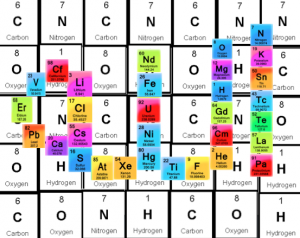Loving Every Atom of Allah’s Creations: Creative Response for Week 2
Medium: collage
This week, in chapter 2 of Prof. Asani’s text, we learned about the four ideals that Muslims consider to be fundamental tenet of their faith, including social justice, compassion, jihad, and importantly, loving God (Asani 58). While recent events have brought into light some of the negative ways in which Islam can be interpreted as justification for malicious acts, it is important to understand that Muslims strongly believe in the connectedness of individual human beings, regardless of their background. Thus, the diversity of the world itself is a creation of Allah, who not only created the heavens, but all of the different types of people on Earth. As Prof. Asani mentions in his book, the “essential unity of creation” is a core belief in Islam. In an essence, all creation is credited to Allah, and as such, deserves the utmost kindness and benevolence.
Furthermore, as Muslims, one must love God beyond anything else, and in many pieces of Islamic literature, love of God is expressed through the love of God’s creations. One particular poet who was particularly adept at expressing this love was Rumi, who believed that there was “a cosmic force that [bound] every created thing to God” (76) so that for him, “[every] atom not only contains this love, but is also a symbolic manifestation of it” (77).
In this regard, I have chosen to write out “Allah” using elements from the periodic table of elements. Atoms and molecules have always fascinated me, and given the title of “Creator” conferred onto Allah in Islamic tradition, every single element in the periodic table itself is a testament to Allah. Some of these elements have been present since the beginning of the creation of the universe, and as time passed, atoms of essential elements combined with each other in specific ratios to form compounds, which are themselves a manifestation of the diverse creations of Allah. Everything in the world around is made of elements, and as Muslims, then, it is important to respect creations both living and nonliving. Notice that in the background, I have four elements repeating: carbon, hydrogen, oxygen, and nitrogen. These elements are crucial for life on Earth, with the former three making up the bulk of organic compounds and of course, us human beings. As such, this creative response expresses how we as humans, despite our outward difference, are made from the same fundamental building blocks, and as such, it is our duty to respect each other and follow the path of peace.
References
A. Asani, Infidel of Love: Exploring Muslim Understandings of Islam, Chapter 2.
Periodic table cutouts used in making collage:
http://chemistry.about.com/od/periodictable/ss/How-To-Use-A-Periodic-Table.htm
